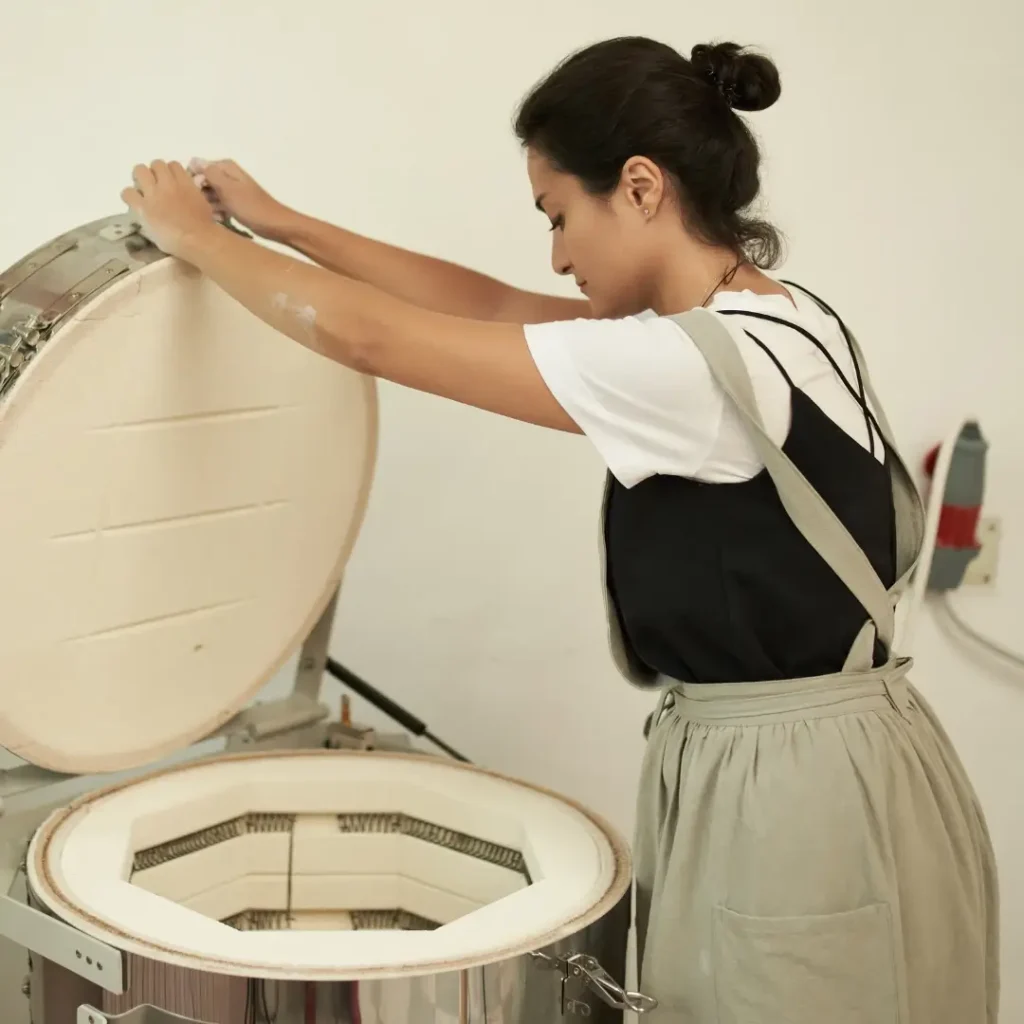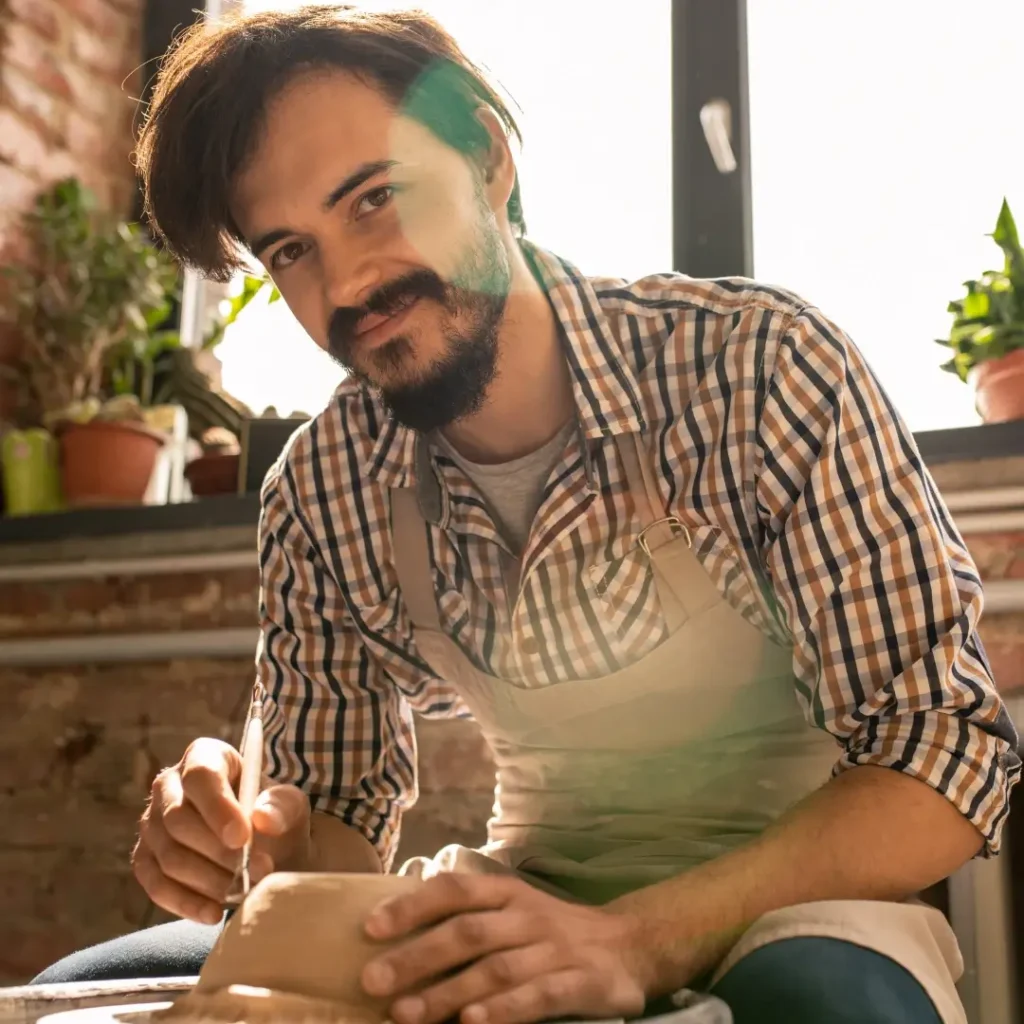Pottery Kilns Safety: Essential Tips for Safe Firing
Pottery kilns safety is crucial for ensuring safe and effective firing practices, whether at home or in a professional studio. Understanding the necessary precautions and safety measures can prevent accidents and equipment damage. Read on to discover essential tips that will help you fire your kiln safely and confidently.
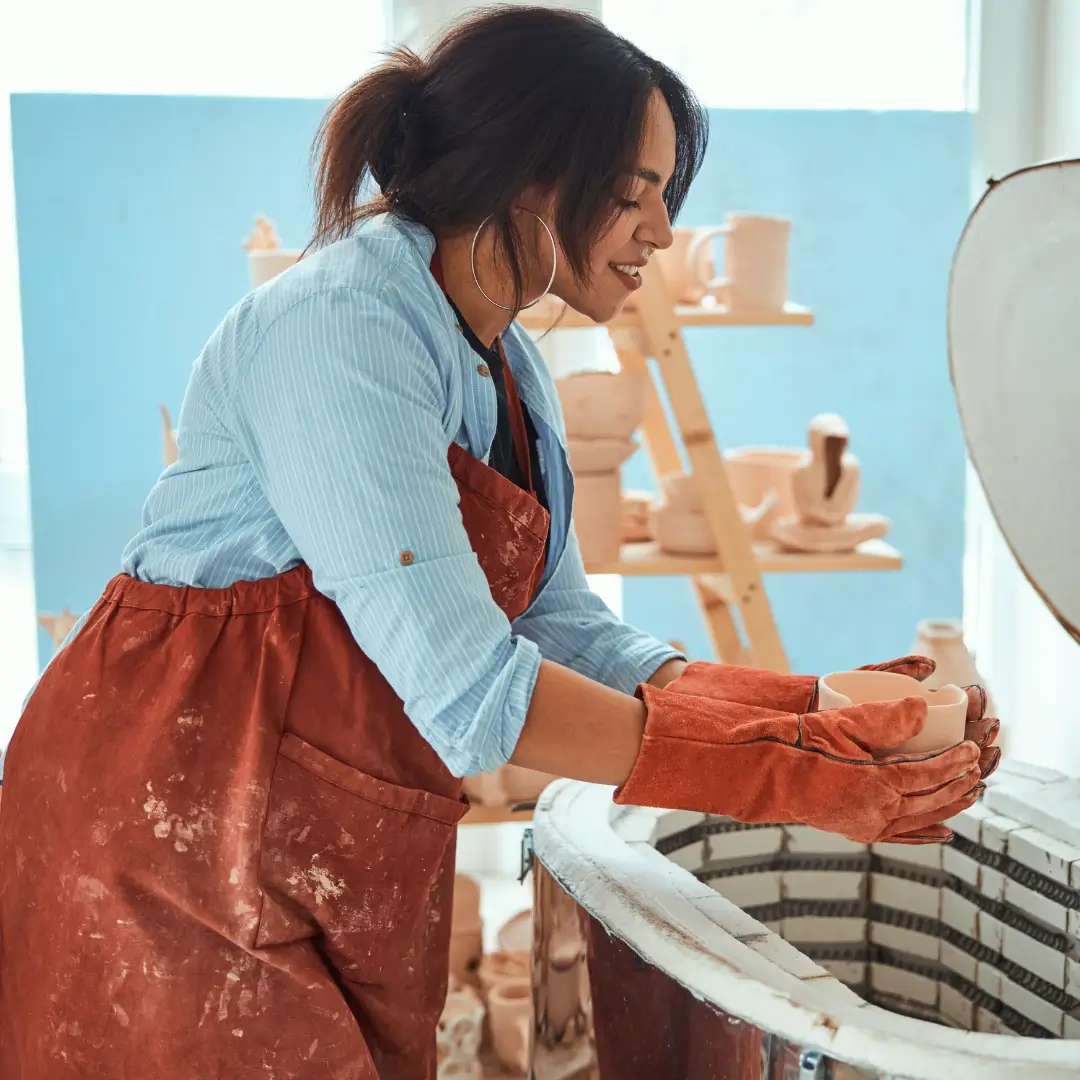
Pre-firing safety measures
Before you even think about turning on your kiln, there are several crucial pre-firing safety measures you need to follow. First and foremost, ensure that your kiln is placed in a well-ventilated area, away from any flammable materials such as curtains, papers, or chemicals. This will minimize the risk of fire and toxic fumes.
Next, inspect the kiln shelves and posts for any cracks or damages. Faulty shelves can lead to disastrous collapses during firing. It’s also essential to ensure that your kiln is clean and free from any residue from previous firings. Any leftover glaze or clay particles can contaminate future projects and may cause unexpected reactions when heated.
Additionally, make sure to read the manufacturer’s instructions thoroughly. Each kiln model may have specific requirements that are critical for safe operation. Check the electrical connections and make sure they are secure and in good condition. Loose or damaged wires can pose serious electrical hazards.
Lastly, gather all necessary safety equipment before starting the firing process. This includes heat-resistant gloves, protective eyewear, and a fire extinguisher located nearby. Being prepared can make a substantial difference in preventing accidents.
Understanding these pre-firing safety measures is the foundation of pottery kilns safety. As we move forward, we’ll delve into best practices during firing and other essential safety tips to ensure a safe and successful pottery experience.
Best practices during firing
Once your kiln is prepped and ready, it’s time to focus on the best practices during firing to uphold the highest standards of pottery kiln precautions. One of the critical steps is to monitor the kiln temperature closely. Sudden spikes or drops can cause cracks in your pottery or even damage the kiln itself. Use a reliable pyrometer to keep an eye on the temperature, and take note of any irregularities.
Another key practice is to avoid overcrowding the kiln. Overloading can hinder airflow, resulting in uneven heating and unpredictable results. Ensure there is ample space between each piece to allow heat to circulate freely. Also, stagger the heights of your pottery if possible to maximize airflow.
Maintain constant supervision while the kiln is firing. Never leave the kiln unattended for extended periods, especially during crucial stages such as soaking or reaching peak temperature. If you need to step away, have someone else take over the monitoring duties.
It’s also important to listen for unusual sounds. Creaking, popping, or cracking noises can indicate that something is wrong. These signs should prompt you to check the kiln immediately to prevent any potential accidents.
Lastly, keep a detailed firing log. Recording the temperature, duration, and any issues encountered during each firing can provide valuable insights for future firings. This practice not only enhances safety but also improves the quality of your work over time.
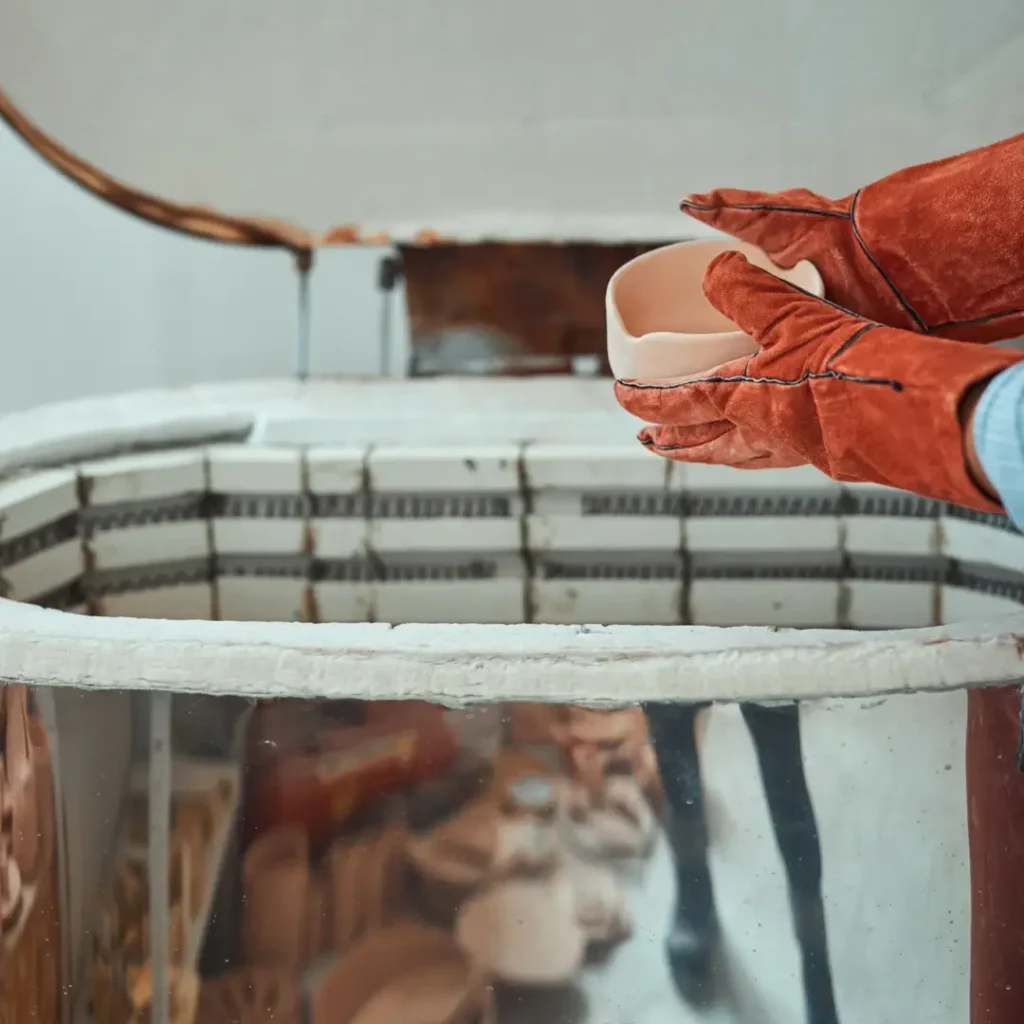
Following these kiln safety measures during firing is crucial. In the next section, we will cover essential post-firing safety tips to complete the cycle of a safe and successful firing process.
Post-firing safety tips
After the firing process is complete, it’s crucial to follow post-firing safety tips to ensure the well-being of both you and your kiln. The first step is to let the kiln cool down naturally. Avoid opening the kiln door too soon, as rapid temperature changes can cause your pottery to crack and may even damage the kiln.
Once the kiln has cooled to a safe temperature, use heat-resistant gloves to carefully remove your pottery. Be cautious of any sharp edges or loose fragments that might have formed during firing. Safely disposing of these fragments helps maintain a clean and safe work environment.
Inspect your kiln shelves and posts for any damage caused by the firing. Check for cracks, chips, or warping that may have occurred and replace any compromised components. Regular maintenance of kiln accessories is essential to ensure consistent and safe firings.
Clean the kiln thoroughly to remove any residue from the firing. Cleanup prevents contamination in future firings and maintains the kiln’s optimal performance. A soft brush or vacuum can help remove loose particles, while a damp cloth can be used for more stubborn residues.
Documenting the results of each firing in your kiln log is a best practice. Notes on temperatures, durations, and outcomes provide valuable data for future reference, helping to improve both safety and the quality of your pottery.
Following these post-firing safety tips wraps up the essential steps of pottery kilns safety. In the following sections, we will address important considerations such as ventilation and the use of personal protective equipment to further enhance your kiln safety practices.
Ventilation and kiln gases
Proper ventilation is a cornerstone of pottery firing safety. When a kiln operates, it releases various gases and fumes that can be harmful if not properly managed. Ensuring your workspace has adequate ventilation helps to mitigate these dangers and creates a safer environment.
First and foremost, it’s essential to install a kiln ventilation system. These systems are designed to extract harmful gases and fumes from the kiln, redirecting them safely outside. Look for venting solutions that are compatible with your specific kiln model to maximize efficiency and safety.
Avoid using your kiln in closed or confined spaces. Always operate it in a room with windows or external vents to allow fresh air to circulate. Implementing an exhaust fan can further enhance air movement, ensuring that noxious gases are quickly dispersed.
It’s also important to identify the types of gases released during firing. Carbon monoxide, sulfur dioxide, and volatile organic compounds (VOCs) are common byproducts. Being aware of these substances emphasizes the importance of effective ventilation and the use of gas detectors to monitor air quality.
Regularly maintaining your ventilation system is crucial. Make sure to check for any blockages or mechanical issues that might impair its functionality. A well-maintained system is essential for continuously removing harmful emissions.
By prioritizing proper ventilation and understanding kiln gases, you significantly enhance ceramic kiln safety. In the next sections, we will cover protective gear and guidelines for electric kiln installation to further ensure safe kiln operations.
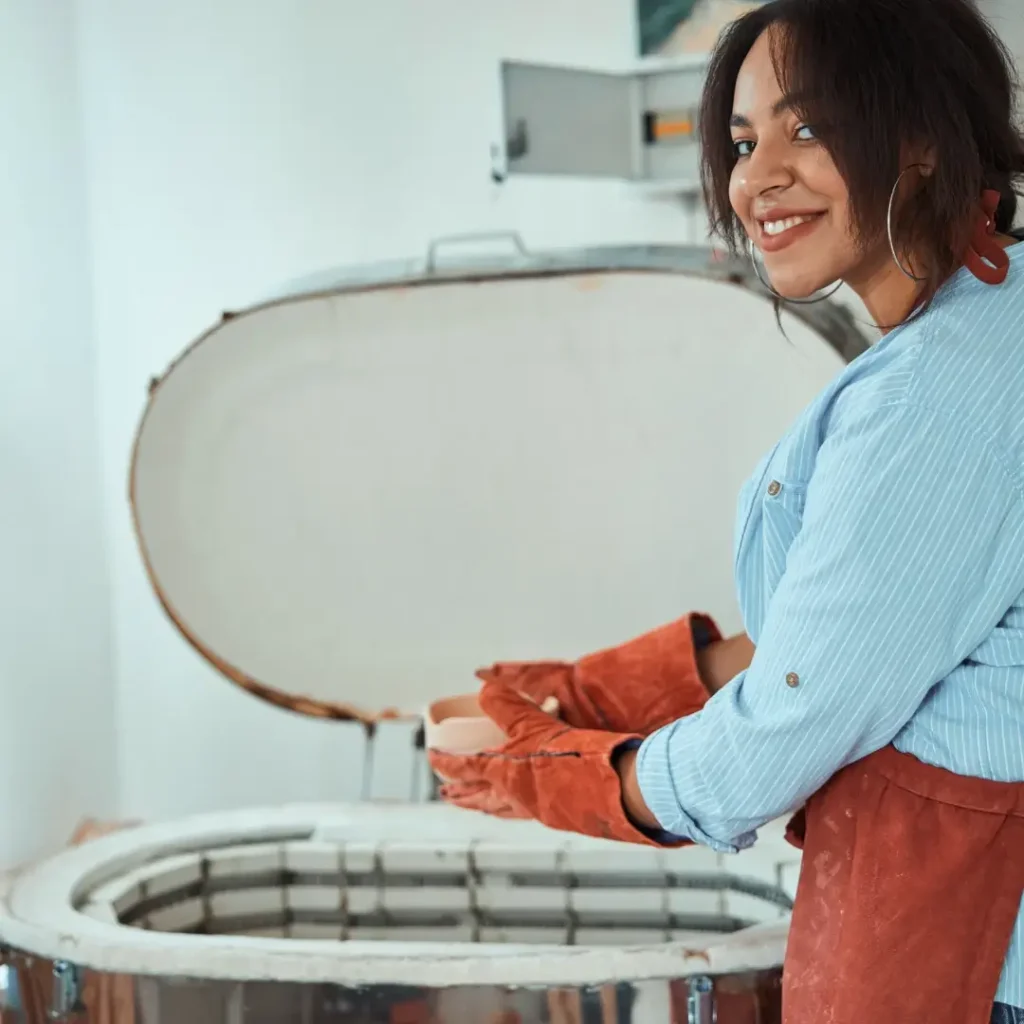
Personal protective equipment for kiln operation
To ensure pottery firing safety, it is vital to use the appropriate personal protective equipment (PPE) during kiln operation. The right gear dramatically reduces the risk of injuries and accidents, providing a safer working environment.
One of the most essential pieces of PPE is a pair of heat-resistant gloves. These gloves protect your hands from burns when loading and unloading hot pottery, as well as when handling kiln furniture. Always choose gloves that are designed to withstand high temperatures specific to kiln firing.
Protective eyewear is equally important. Safety glasses or goggles shield your eyes from potential hazards, such as flying fragments or intense heat exposure. Some materials can release particles that, if they come into contact with your eyes, may cause serious damage.
Additionally, wear a long-sleeved shirt and long pants made of non-synthetic materials. Synthetic fabrics can melt under high temperatures, posing a burn risk. Cotton or other natural fibers offer better protection against heat exposure.
A respirator or mask is necessary when dealing with kiln fumes and gases. These devices filter out toxic particles and chemicals, ensuring you breathe clean air. Always ensure your respirator is rated for the specific types of gases you may encounter during firing.
Lastly, sturdy closed-toe shoes should be worn to guard against falling objects and accidental spills. Shoes with good traction can help prevent slips and falls around the kiln area.
Equipping yourself with the proper PPE is a fundamental aspect of ceramic firing safety. Up next, we will discuss the guidelines for electric kiln installation to further enhance the safety of your firing process.
Electric kiln installation guidelines
Installing an electric kiln correctly is essential for ensuring ceramic kiln safety and optimal performance. Here are some key guidelines to help you get it right from the start.
First, choose a suitable location for your kiln. The space should be well-ventilated, non-flammable, and large enough to provide easy access around the kiln. Avoid placing the kiln near combustible materials like curtains, carpets, or wooden surfaces.
Ensure your kiln sits on a heat-resistant surface. Kiln stands or metal tables are ideal, as they can withstand the high temperatures generated during firing. Avoid placing the kiln directly on the floor to protect it from potential heat damage and to facilitate proper ventilation.
Electric kilns require proper electrical connections. Make sure the electrical outlet and breaker can handle the kiln’s voltage and amperage requirements. Consult a licensed electrician to install a dedicated circuit for your kiln to avoid overloading your home’s electrical system.
Use a ground fault circuit interrupter (GFCI) for added safety. This device can cut off electricity if it detects any electrical imbalances, reducing the risk of electrical shocks. Regularly inspect electrical cords and plugs
for signs of wear or damage, and replace them as needed.
It is also essential to install a kiln venting system. Proper ventilation helps expel harmful gases and fumes produced during firing. A downdraft venting system, for example, can effectively pull these emissions from the kiln and vent them outside.
Finally, keep a fire extinguisher nearby. In the unlikely event of a fire, a fire extinguisher can provide immediate control, preventing further damage and ensuring your safety. Make sure it is easily accessible and that you are familiar with its operation.
By following these installation guidelines, you enhance pottery kilns safety and ensure that your kiln operates efficiently. Next, we will explore the differences and specific safety precautions for home studios versus industrial settings.
Safety in home studios versus industrial settings
When it comes to kiln safety guidelines, the environment in which you operate your kiln significantly impacts your safety protocols. There are noticeable differences between home studios and industrial settings that must be considered to ensure a safe firing process.
In home studios, space is often limited, making it crucial to optimize the placement of your kiln. Ensure your kiln is installed in a well-ventilated area, far from flammable materials. Proper electrical setup is equally important; always use a dedicated circuit to avoid overloads.
Noise levels in home studios are usually lower. However, always use protective gear, such as heat-resistant gloves and protective eyewear, to safeguard against burns and flying debris. Supervision is essential, especially if children or pets are nearby. A fire extinguisher should be within easy reach at all times.
In contrast, industrial settings often involve multiple kilns and a higher volume of work. This scenario calls for advanced ventilation systems and continuous air quality monitoring to manage fumes and gases effectively. The use of automated kiln controllers can aid in maintaining consistent firing cycles, reducing the risk of human error.
Industrial environments also require rigorous maintenance schedules. Regular inspections of kilns, electrical systems, and ventilation setups help in identifying potential hazards. Ensure that all personnel are trained in emergency procedures and aware of exit routes in case of fire or other emergencies.
Another distinction is the availability of safety equipment. Industrial studios should be equipped with multiple fire extinguishers, first aid kits, and safety signage to promptly address any issues that arise. Implementing these measures creates a safer workspace for all involved.
Understanding the specific safety needs of home studios versus industrial settings enhances overall pottery kiln precautions. As we move forward, we’ll discuss common safety pitfalls and how to avoid them to ensure a safe and successful firing process in any setting.
Common safety pitfalls and how to avoid them
Even seasoned potters can fall into common safety pitfalls when operating kilns. Recognizing these pitfalls and knowing how to avoid them is key to maintaining pottery kilns safety.
One frequent issue is neglecting proper ventilation. As mentioned earlier, inadequate ventilation can lead to the accumulation of harmful gases such as carbon monoxide. To avoid this, always ensure your kiln area has sufficient airflow, and regularly check your ventilation system for blockages.
Another common mistake is overloading the kiln. Placing too many items inside can cause uneven heating and increase the risk of damage to your pieces and the kiln itself. Stick to the recommended load capacities and spacing guidelines provided by the kiln manufacturer.
Skipping regular maintenance can lead to equipment failure. Kilns require periodic inspections to ensure all components are in good working order. Ignoring this can result in unexpected malfunctions that may pose safety risks. Schedule routine checks and replace any worn-out parts promptly.
Failing to use adequate personal protective equipment (PPE) is another pitfall. PPE such as heat-resistant gloves, protective eyewear, and proper clothing is essential to protect yourself from burns, toxins, and flying debris. Always have your safety gear on hand and make it a habit to use it every time you operate the kiln.
Incorrect installation of electrical connections can be hazardous. Ensure that your kiln is connected to the correct voltage and amperage, and that it has a dedicated circuit to prevent electrical overload. Consulting with a licensed electrician for the initial setup can prevent many potential issues.
Lastly, always maintain constant supervision during the firing process. Leaving the kiln unattended increases the risk of accidents. If you need to step away, ask someone to monitor the kiln or use automated kiln controllers to manage the process safely.
By being aware of these common safety pitfalls and taking steps to avoid them, you significantly enhance pottery kilns safety . This proactive approach not only protects you and your workspace but also ensures the success of your firing endeavors.
Colored Slip vs Underglaze: Understanding the Differences and Applications
What to Wear to Pottery Class: Essential Tips for Comfort and Safety
